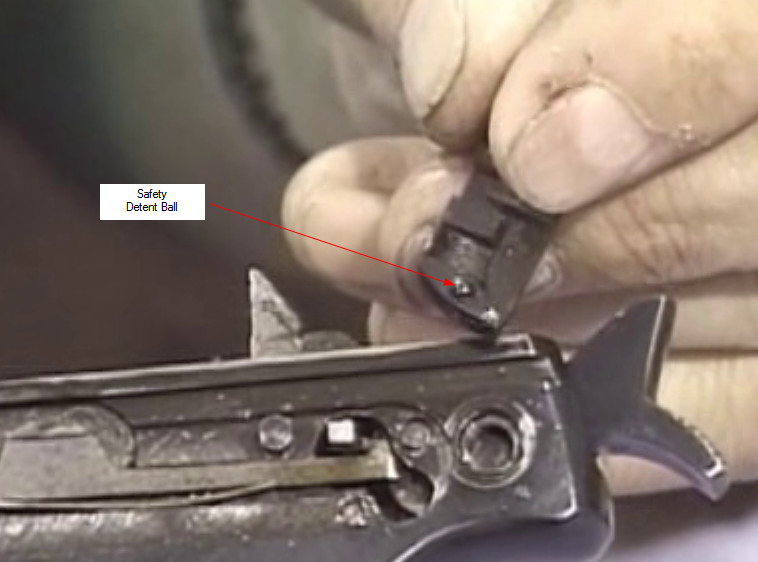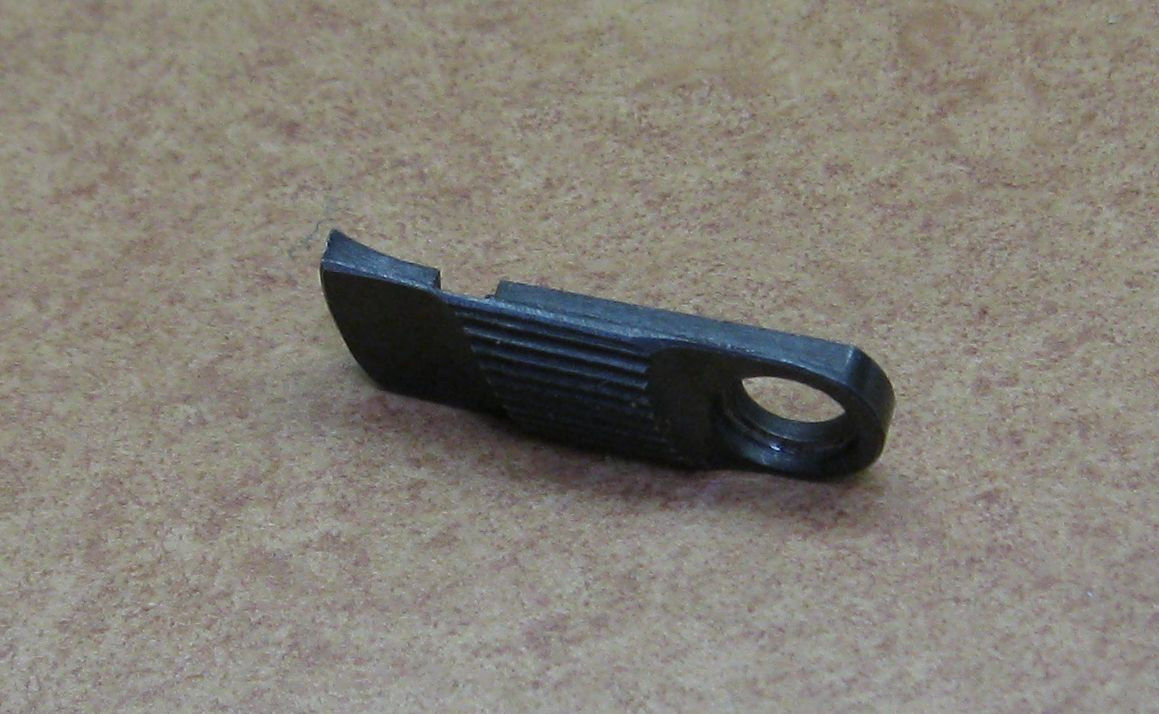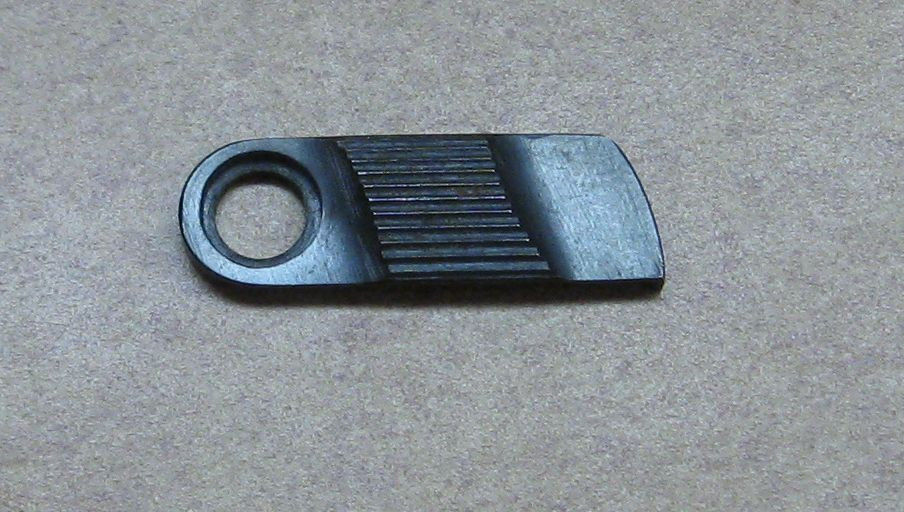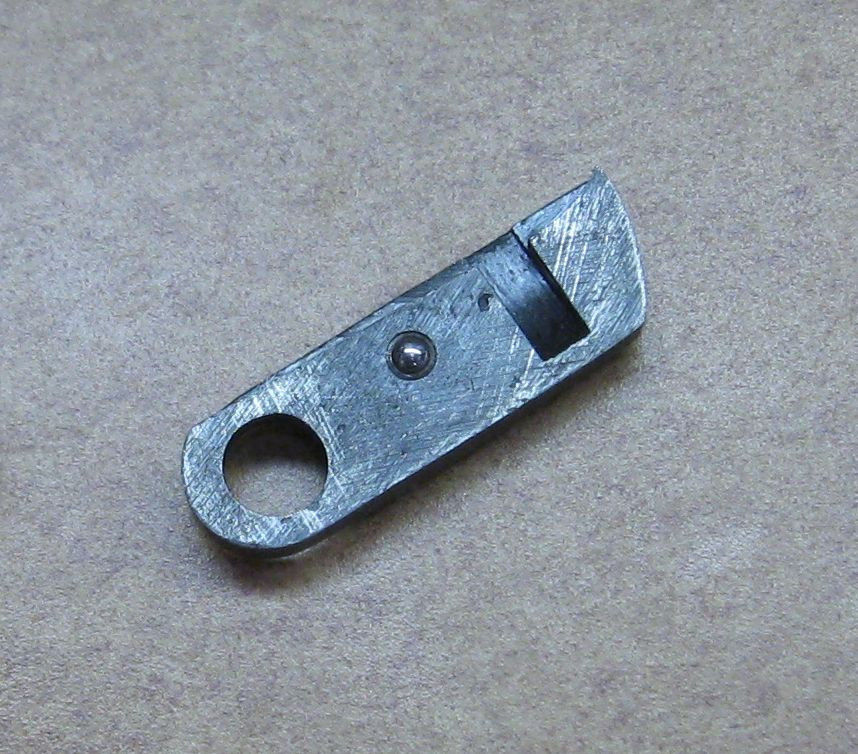I don't get many old model High-Standards here. Most all I work on is from the 100 series on up, (I have a 2nd generation slide in barrel Supermatic myself). It seems the manuals are plentiful for these too.
I did find a copy of the parts list, for the letter models, that was a scan of the sheet and not a dark copy, but it doesn't really show what I was hoping to see either. The E is different, because it has a takedown lever right behind the safety, and that moves the parts around.
Parts List:
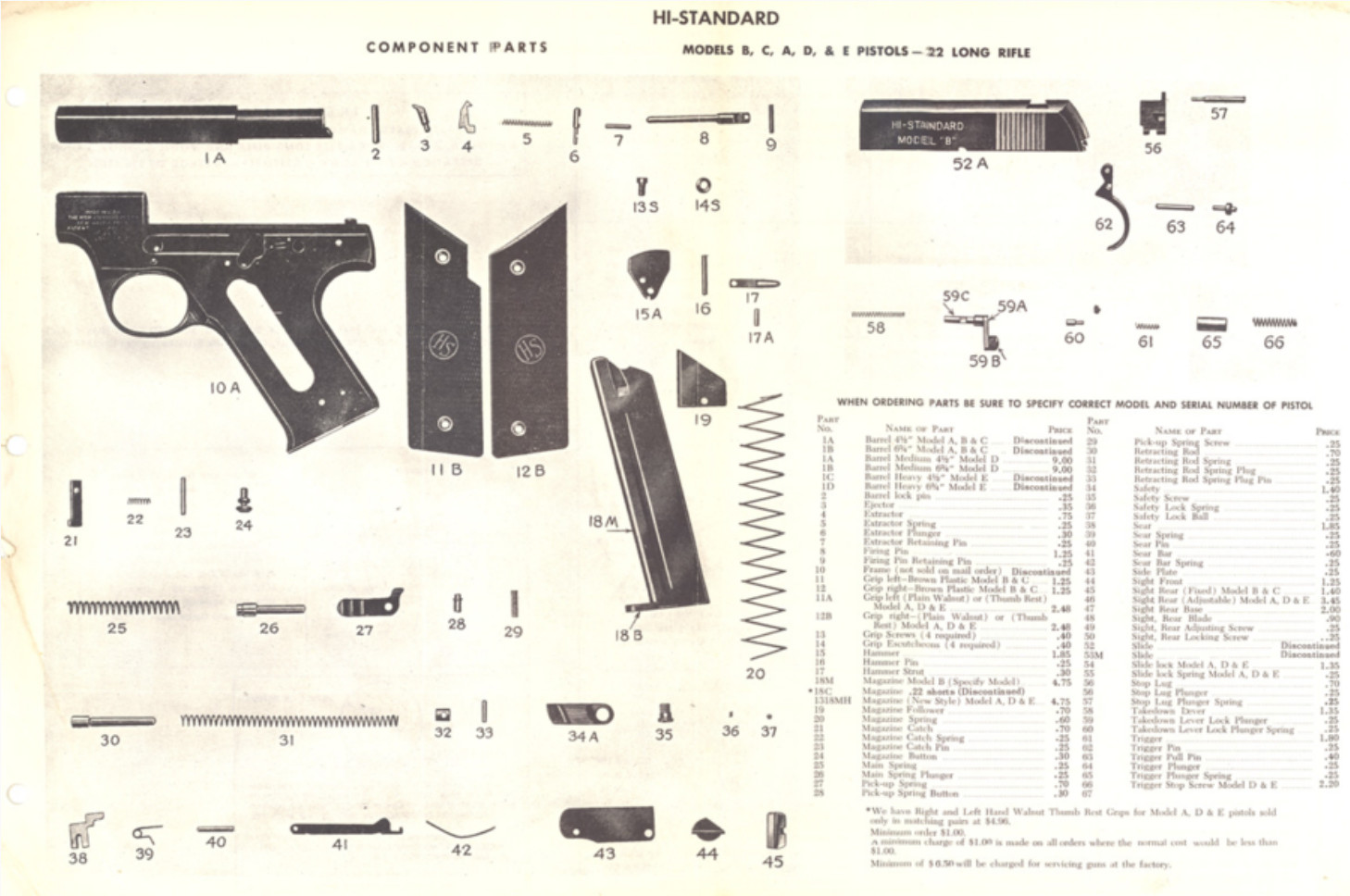 HS1
HS1 by
matneyw, on Flickr
Frame Closeup:
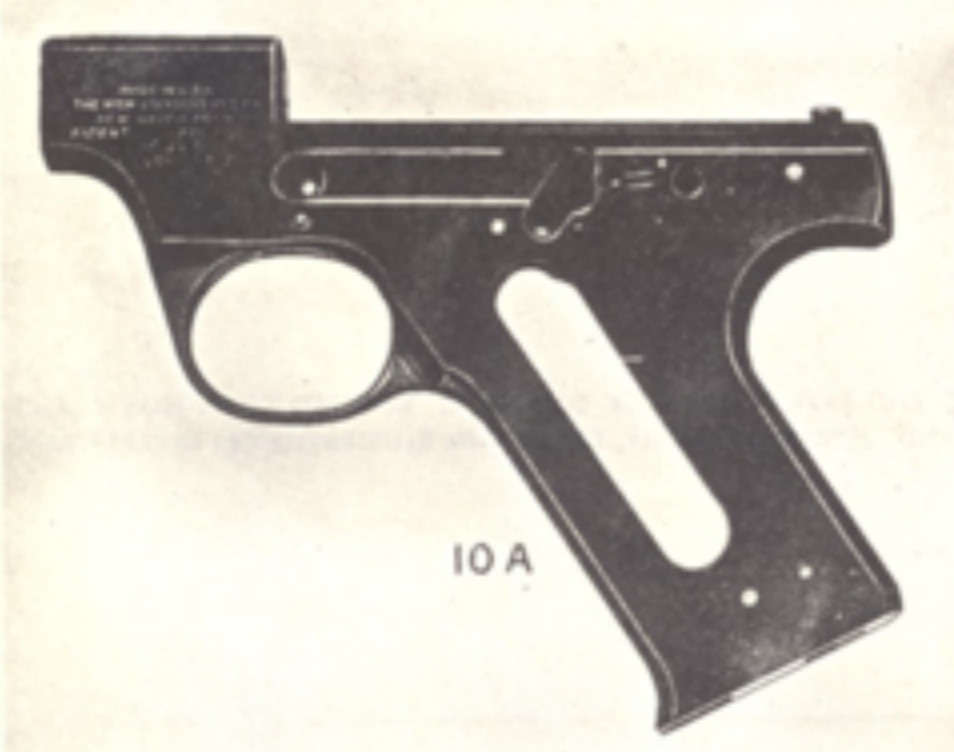 HS2
HS2 by
matneyw, on Flickr
On the above, it looks to be two elongated cuts for the safeties detent divots, which I guess one could call reverse rabbit ears. That threw me.

The later versions use a method of using the sideplate, which has a spring device, that fits into divots on the safety itself.
Last, if the spring is bad, and soaking it wont bring it loose, I don't know if you can get it out. They sealed that in, using a hollow punch, and compressed the metal all around the front of the ball. You can see an outline of the circular indent in the one photo of the safety above. The new safety, in the photo, came with a ball and spring in it. It's available on ebay, but they want $37.00 for the thing.



